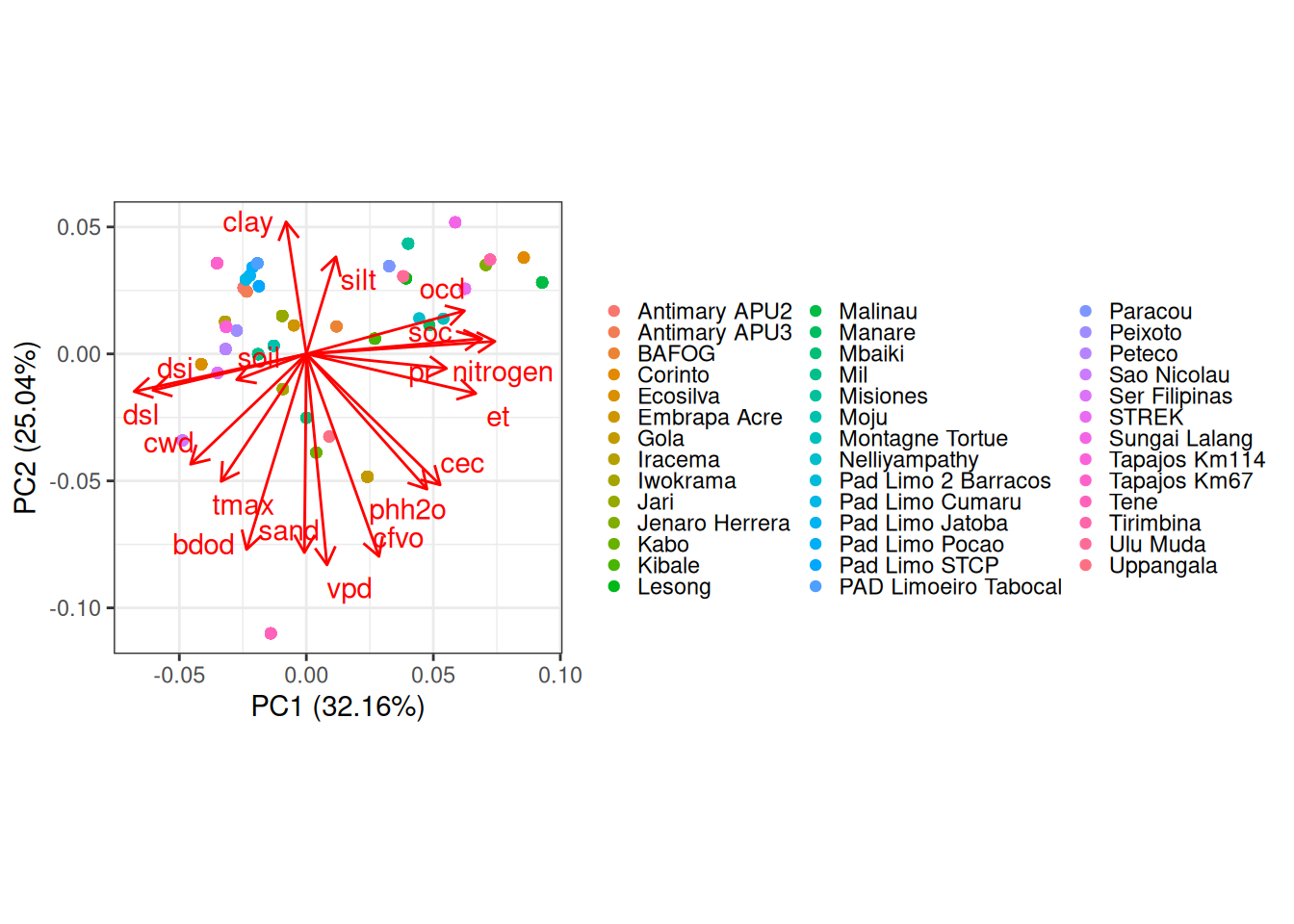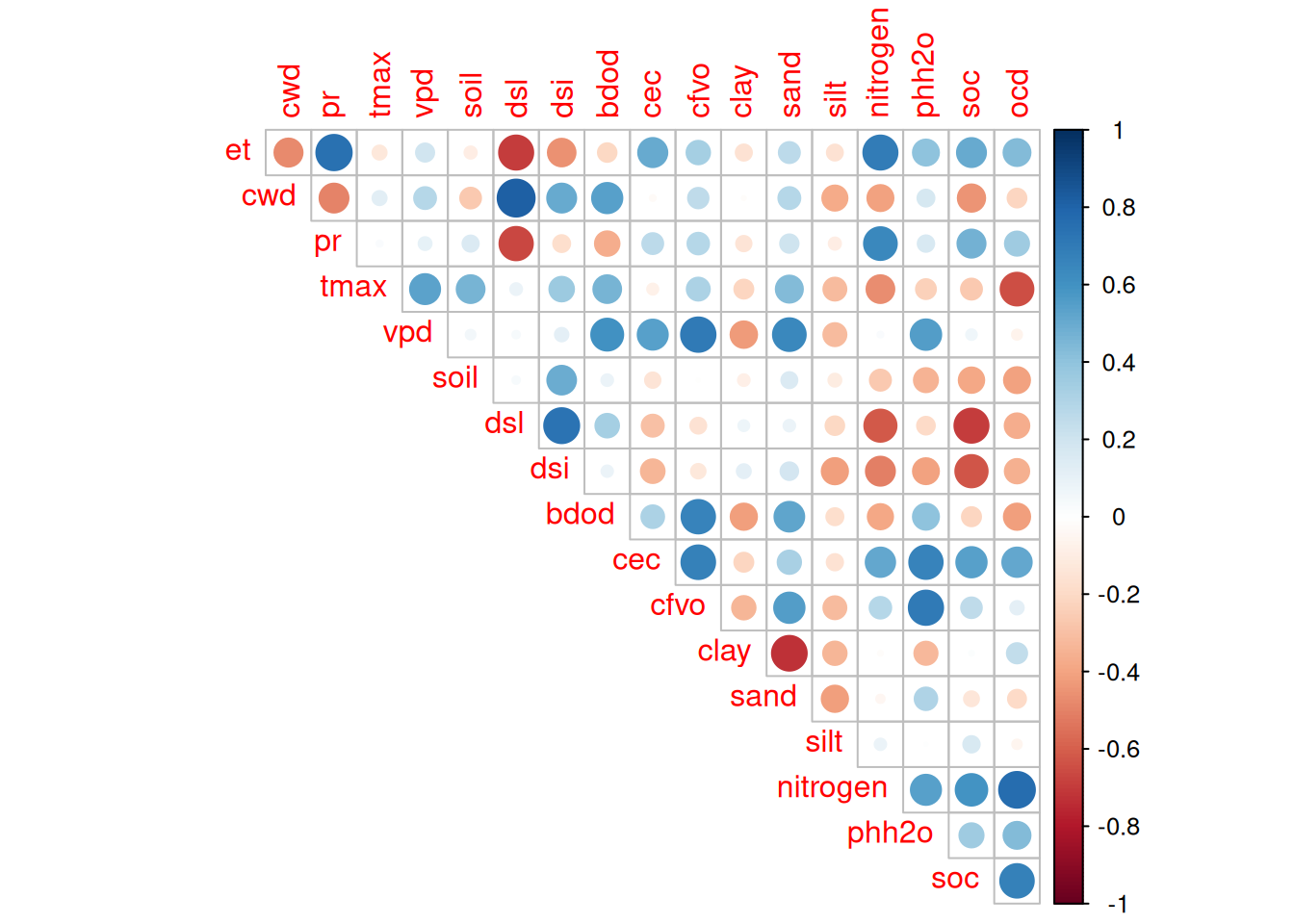Metrics gathering for modelling steps of the project:
CWD: Climate water deficit, mm
ET: Evapotranspiration, mm
Pr: Precipitation, mm
Soil: Soil humidity, mm
VPD: Vapour Pressure Deficit, kPa
Tmax: Maximum temperature, °C
DSL: Dry season length, daysmultiplied by 30
DSI: Dry season intensity, mm
Clay: Proportion of clay, %
Sand: Proportion of sand, %
Silt: Proportion of silt, %
BDOD: Bulk density, kg dm³
CEC: Cation Exchange Capacity, cmolC kg-1
CF: Coarse Fragments , cm3 100cm-3
N: Soil nitrogen, g kg-1
pH: Soil pH
SOC: Soil organic carbon content, g kg-1
OCD: Organic carbon density, kg dm³
Code
<- read_tsv ("data/derived_data/sites.tsv" ) %>% select (- plot, - latitude, - longitude) %>% unique ()<- read_tsv ("data/derived_data/climate_year.tsv" )<- read_tsv ("data/derived_data/soil.tsv" ) %>% group_by (site) %>% filter (depth <= 15 ) %>% summarise_all (mean, na.omit = TRUE ) %>% select (- X, - Y, - depth, - ocs)%>% left_join (climate) %>% left_join (soil) %>% write_tsv ("outputs/environment.tsv" )
We have correlation among group of variables, notably among climate and soil, which is logical but should be taken into account. For instance SOC is highly anti-correlated to DSL and DSI.
Code
<- read_tsv ("outputs/environment.tsv" ) %>% na.omit ()<- prcomp (data %>% select (- site),scale. = TRUE autoplot (pca,loadings = TRUE , loadings.label = TRUE ,loadings.label.repel = TRUE ,data = data, colour = "site" + theme_bw () + coord_equal () + scale_color_discrete ("" ) + theme (legend.key.size = unit (0.5 , "line" ))
Code
read_tsv ("outputs/environment.tsv" ) %>% select (- site) %>% cor (use = "pairwise.complete.obs" ) %>% :: corrplot (type = "upper" , diag = FALSE )

